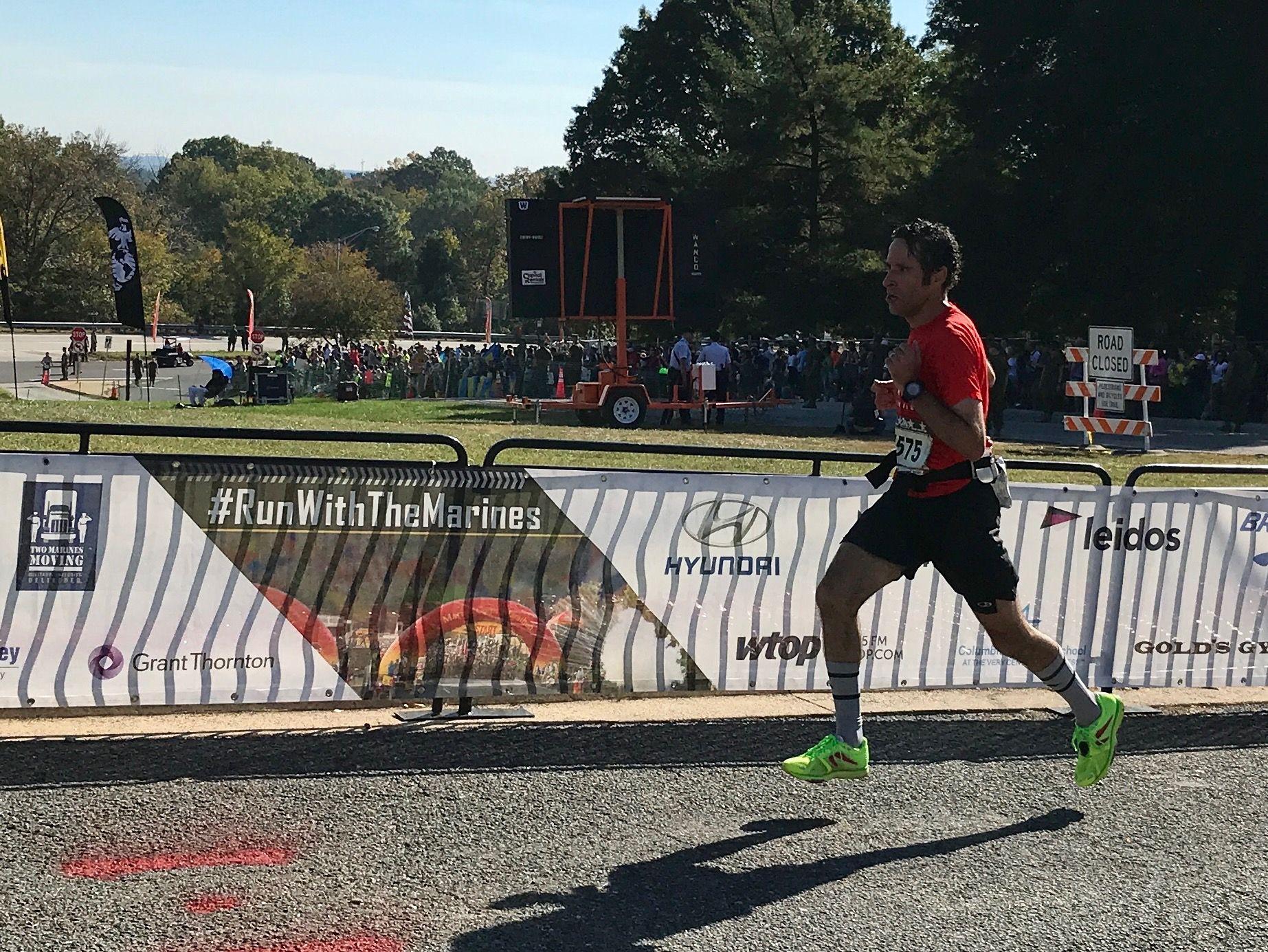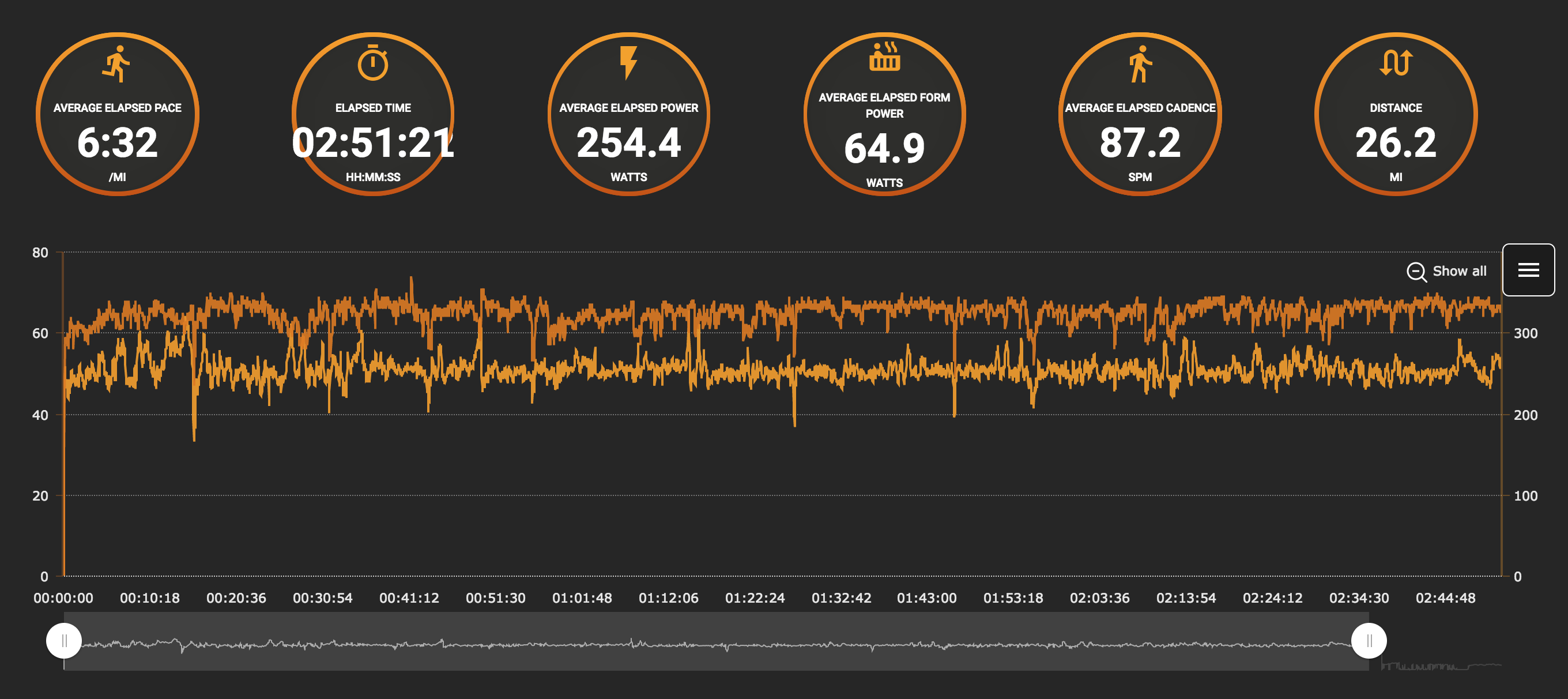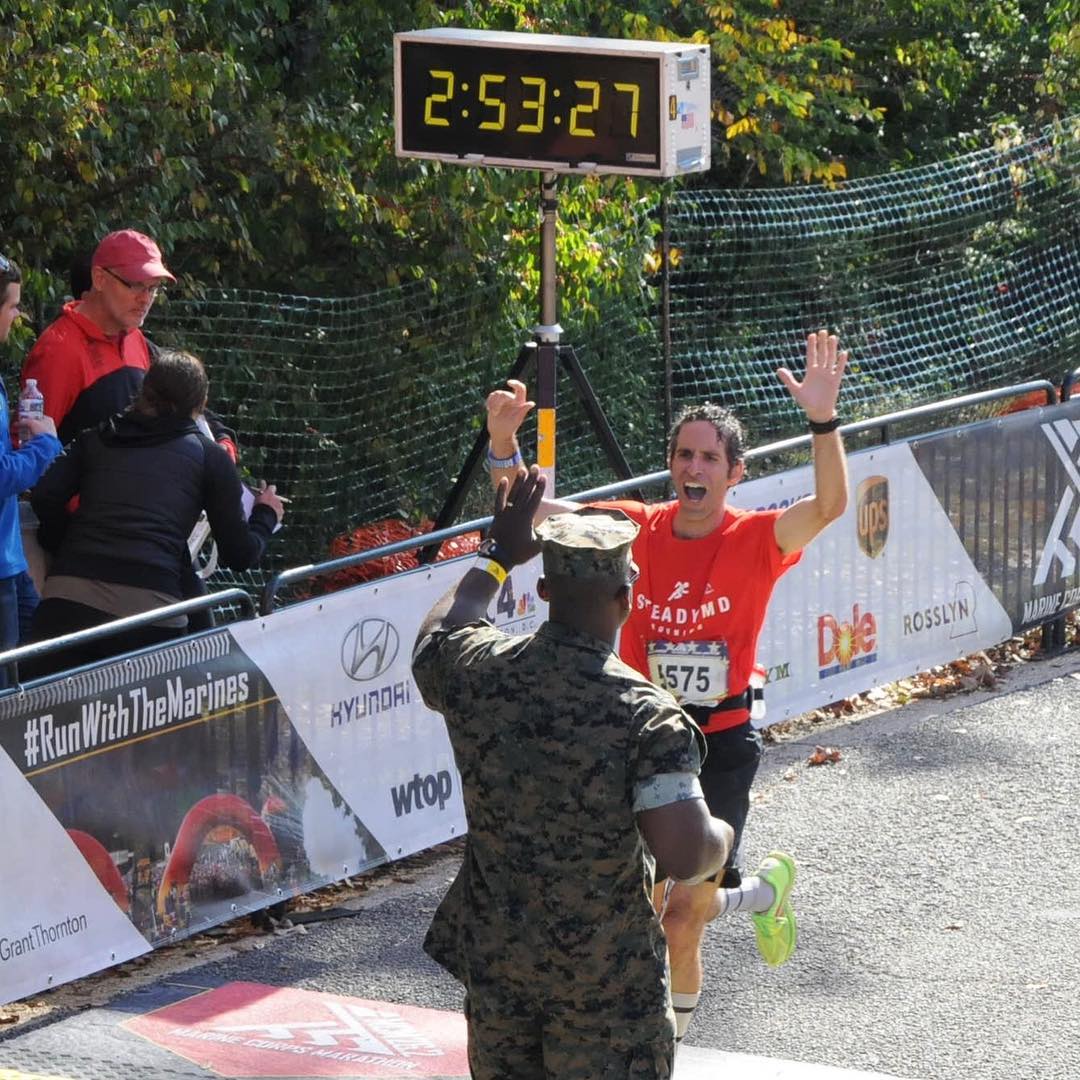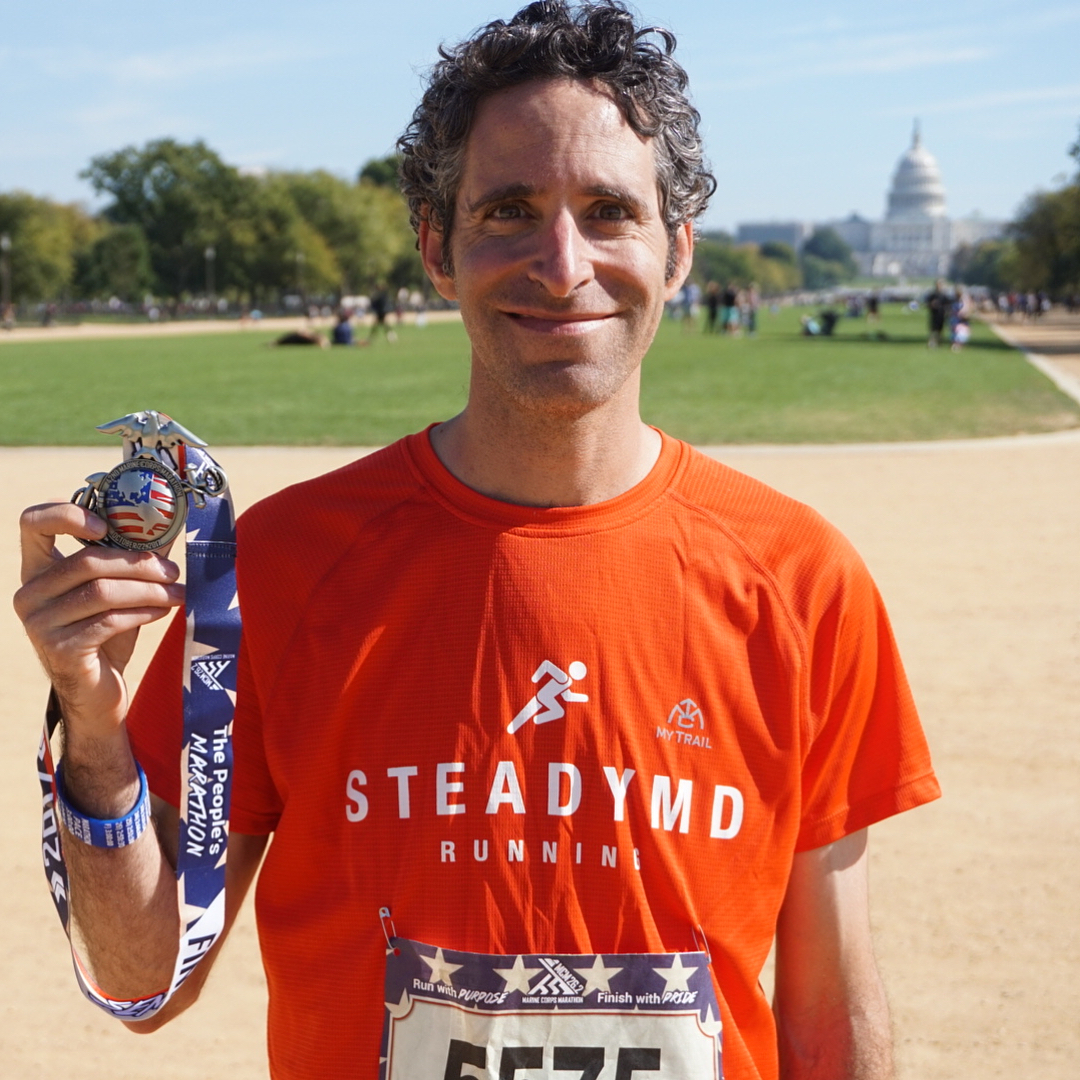Hitting Your Potential: Josh Emdur Conquers the Marine Corps Marathon
The week before the marathon my coach reviewed my data from the past few months and determined that a goal race pace for me would be 250 watts. By extrapolating, my Stryd said I would run a sub-3 hour marathon time.

Running is pure... you versus the clock.
From the moment you lace up in the morning until you reach the finish line, you are fully committed to the race. You are determined to take down time. The gun fires and the race begins. Your excitement peaks as thousands of runners take their first step.
My first attempt for qualifying for the Boston Marathon was the 2012 Chicago marathon. I started and finished fast but ended up missing my time by mere seconds. My body could have run faster, but I lacked the confidence to achieve my goal.
Since that 2012 race, I have qualifed for Boston 5 times. I learned that you have to run hard and smart to reach your potential.

Training hard means running consistently. Incorporating running into your lifestyle is the only way to run consistency. You need a reason to get out on days when you do not really want to get out of bed. Running clubs and getting out with friends is great for this. Following a training calendar where you feel accountable is also motivating and valuable.
Training smart means learning how to allow your body to reap the benefits of your hard work. Earlier in my running career I would always run hard, but didn’t know how to train smart. Training smart means learning how to run easy.
Fortunately, I found a coach to partner with who helped guide my training and teach me how to run slow. The 80/20 rule has proved invaluable to me. By spending 80% of my time running easy (Zone 2) and 20% running hard (Zone 4 & 5), I have seen my race times drastically improve.
Athletes have a few options on how to measure their training zones. The simplest is Rate of Perceived Exertion (RPE) where a runner judges their effort based on a 1-10 subjective scale. I have found that this may works for extremely seasoned runners, but lacks the the scientific objectivity that most the other 99% of runners need to learn their bodies.
The second option is HR (Heart Rate), which I have used for years. HR training provides the quantifiable data that RPE lacks. Calculating HR zones is tricky. The best way to determine HR zones is a lactate threshold test in the lab. HR is also influenced by hydration status, ambient temperature, poor sleep, exhaustion, stress, and illness which can cause the zones to change daily.
The third option is Power. I started training with power this year and have found it the easiest metric of them all. Just clip the Stryd pod to your shoe and get running. To get your zones dialed, all you need to do is a track or the open road. The zones are reliable and consistent on a daily basis.
As a busy physician, parent, and runner; I have learned how to use science and training theory to maximize my performance while maintaining a great life balance.
In celebration of my 40th birthday, I ran the Marine Corps Marathon. I went to the starting line without an exact time goal. I was hoping to best last year's Boston time of 2:56:37, but was not really worried about it. My training cycle for the race lacked the volume that I would have liked, but my Stryd data provided me with confidence. I could see that on my long runs my power was consistent without changes in my form. From this information I knew I was ready to race!!
The week before the marathon my coach reviewed my data from the past few months and determined that a goal race pace for me would be 250 watts. By extrapolating, my Stryd said I would run a sub-3 hour marathon time.
The 26.2 mile course included a total gain of 846 feet with a beautiful tour of our nation's capital. The race started with a climb. I kept my power output constant at 250 watts. Despite my urge to keep pace up the hill, I relied on my watch to slow my pace to 7 min/mile and stuck to my power target. Once I crested the hill at mile 2.4, I began the descent. My power quickly dropped prompting me to pick up my pace to 6 min/mile.
I found the magic of racing with power on that first hill. From mile 2.4 on I focused on my power and forgot about pace. I felt liberated by forgoing my usual ritual of checking mile splits, worrying about my time, and looking at my HR drift up as I fatigued. Pacing with power allowed me to focus on my wattage, how I felt, and the world around me.

At mile 21 I noticed that my power was starting to fall despite my RPE staying constant. In races past I have lost time in these last few miles since I would find myself slowing with the pack of racers around me. On this race as soon as my power started to fall, I kicked up my exertion and focused on my form and running economy.
Miles 22-25.2 I was able to stay on pace with enough left in the bank to surge the last mile at my 10k pace of 275 watts which was enough to earn a 7th overall Strava trophy for the last 1000m uphill finish averaging a 5:29 mile with a peak power of 411 watts! I crossed the finish line with my marathon PR of 2:53:26 which was good for an 11th place in my 40-44 age group and an overall 85th place out of nearly 30,000 runners.

Stryd proved to be a valuable tool in training by giving me actionable data to guide my workouts and gave me the confidence I needed to execute on race day. I eagerly await my next challenge and hope to prepare to race at a higher wattage at the 2018 Boston Marathon.
--Josh Emdur, D.O. Boulder Colorado

Want a doctor that understands you? SteadyMD gives you the opportunity to partner with a doctor understands the needs of runners. Check out SteadyMD to find out how Josh can help you: SteadyMD Running.


